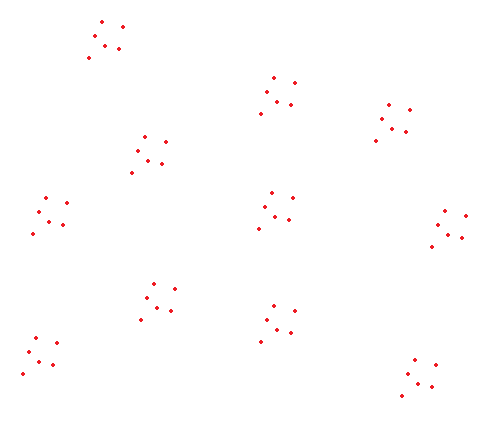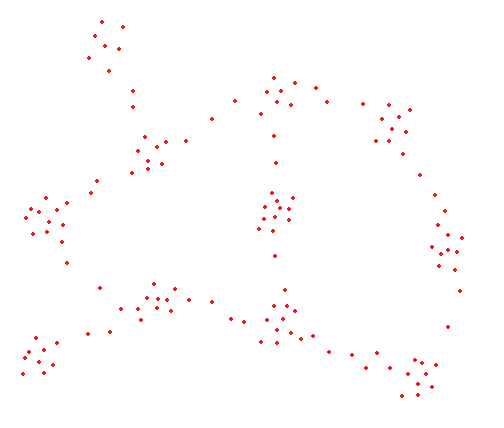-
Posts
1031 -
Joined
-
Last visited
About gib65
- Birthday 12/29/1976
Contact Methods
-
Website URL
http://www.shahspace.com/art
Profile Information
-
Location
Calgary
-
Interests
writing, drawing, philosophizing...
-
College Major/Degree
B.Sc. computer science & B.A. psychology
-
Favorite Area of Science
quantum/relativity/modern... the deep stuff
-
Occupation
web/software developer
Retained
- Protist
Recent Profile Visitors
The recent visitors block is disabled and is not being shown to other users.
gib65's Achievements

Organism (8/13)
30
Reputation
-
Hello, When I think about the expansion of the universe, and how it appears to be accelerating, I understand that the expansion of the universe is more than just galaxies moving apart at greater and greater speeds but space itself expanding at an accelerated rate. But if space is expanding at an accelerated rate, does that mean time is also expanding at an accelerated rate? Or speeding up? Space and time are, after all, part of one continuum called "spacetime", are they not? If so, what does that entail?
-
Thanks TheVat, glad I asked.
-
Hello, Has anyone tried Ketone IQ? I'm checking it out at this website here: commercial link removed by moderator I asked them for their nutritional information and they gave me this: No carbs, no fat, no protein... just 10g of ketones per 35ml. The fine print also says it contains 2% other ingredients. I don't recognize any of these. It is said to give you energy. Does this make sense given the ingredients listed above?
-
Wow, that's interesting. "Hubble didn't record the initial blast in January 2018, but for nearly one year took consecutive photos, from 2018 to 2019, that have been assembled into a time-lapse sequence." So the video in that link is actually a time-lapse of a process that in reality took about a year. So if we were looking at it through a telescope "live" we wouldn't really see any animation. I'm surprised they didn't post the video.
-
Has a supernova ever been recorded? I mean with a telescope? I'm used to seeing images from Hubble or JWST but I've never seen videos. Are these telescopes capable of generating videos? If they're not, would it be possible to connect an earth-bound telescope to a video generating device and record what it sees? If so, could it be directed to a star expected to go supernova very soon and just record until it happens? What would it look like?
-

How does the light from distant stars get to our eyes?
gib65 replied to gib65's topic in Astronomy and Cosmology
Not along my direct line of sight to the star, but remember that I'm thinking of the photon as a wave, which means it propagates out in all directions, like an ever growing sphere. In that sense, literally everything is in its way. If any one particle in the path of the sphere capable of absorbing photons happens to absorb it, then the ones in my eye won't. My eyes are competing with an unimaginable number of things. Even an object behind the star (opposite of me) could potentially absorb the photon, meaning, in a manner of speaking, that even objects behind the star can "blocked" my view of it. Of course, if something gets that photon before my eye does, there are an unimaginable number of photons left for my eye to get. The main question of this thread is: are those (unimaginable) numbers comparable such that one shouldn't be surprised that one can still see the distant stars. "Probably also yes." I wholeheartedly agree. 😁 -
How does the light from distant stars get to our eyes? Maybe it's just my misunderstanding, but the odds of seeing a distant star seem astronomically low. Here's my understanding of how it works. Please let me know if I've got anything wrong. The light emitted from stars are photons. Photons travel through space as waves. These waves are no different than the waves of any other particle described by the wave function of quantum mechanics. That is to say, they describe the locations where the particle is most likely to be if one attempted to measure their location. By the time a photon from a distant star reaches my eye, the wave spans a vast amount of space. I can see the star from locations on Earth thousands of miles apart. I can even see the star from the Moon. Or from Mars. But according to quantum mechanics, when the wave function collapses, it collapses to a much more specific location. This is where I might be misunderstanding. When we see something, the light from that thing is stimulating a molecule in either a rod cell or a cone cell in the retina which triggers an electrical signal to be sent from the eye to the brain. Does this count as the wave function of the photon "collapsing"? Is the molecule in the rod/cone "absorbing" the photon? If this is right, then out of all the places and things that could have collapsed the photon's wave function throughout it's journey from the star, this one molecule in my eye happened to be the one. That seems astronomically improbable. Now, I realize the star is not just emitting one photon. It emits billions or trillions of photons every second (right?). Is this what makes up for the improbable odds? The probability still seems extremely low. The star may emit billions or trillions of photons but it is billions or trillions of miles away, so that's a huge number of things that could interact with the photon and cause it to collapse. Furthermore, it doesn't seem to matter where I stand. If I move an inch to the left, I can still see the star. If I move an inch to the right, I can still see the star. That means there are photons coming from the star for every inch of ground I could be standing on, and for every inch of ground I could be standing on, there are enough photons such that out of all the things that could cause its collapse, one of them is always guaranteed to collapse on this one molecule in my eye (and more likely, there are enough photons to collapse on several such molecules since seeing a star most likely requires several rod/cones in the eye to be stimulated). Are there really just that many photons being emitted by the stars in the sky? Or am I misunderstanding something in the above?
-
I've heard of a goldilocks zone for solar systems--a region around the solar system's sun that's not too close and not too far away from the sun for life to thrive--but is there a similar concept for galaxies? For example, could a solar system capable of sustaining life exist deep within the central bulge of a galaxy? Or would that region be too hot? Similarly, could a solar system exist far outside a galaxy and still be capable of sustaining life? It might be significantly colder in the empty space between galaxies but the solar system's sun could provide all the heat life needed, couldn't it?
-
I'm familiar with the prediction that global warming is melting the polar ice caps and glaciers around the world causing the oceans to rise. But wouldn't global warming also cause the oceans to evaporate by a certain degree, thereby off setting the rise in ocean levels? When scientists make predictions about how much ocean levels will rise, do they take into account rates of evaporation?
-
Hello everyone, I have a theory about drug tolerance that I'd like some feedback on (is there support for it? Against it? Can anyone tell me if there's reasons it might to true/false?). It goes a bit deeper than the already widely accepted their of receptor upgrading/downgrading (and note that it's not a competing theory but builds on it). The theory of receptor upgrading/downgrading, as I understand it, is that neurons will shed their receptors (downgrade) if they detect (somehow) that those receptors are overstimulated, and will build more receptors (upgrade) if they detect that those receptors are understimulated. As I understand it, this happens with both drugs and naturally occurring neurotransmitters. If a drug finds its way into the synaptic gap and binds to receptors therein, then after a while those receptors will start downgrading to return the level of activity to normal. If the drug somehow blocks naturally occurring neurotransmitters from stimulating the receptors, then after a while those receptors will start upgrading to return the level of activity to normal. This can happen directly or indirectly. A drug can indirectly increase the amount of stimulation at receptor sites by, for example, increasing the rate at which naturally occurring neurotransmitters are released into the synaptic gap. This is the case with dextroamphetamine. It increasing the amount of stimulation by entering into the synapse and pushing out more dopamine into the synaptic gap than usual, and the dopamine stimulates the receptors directly. Likewise, a drug can indirectly decrease the level of stimulation of receptor sites by, for example, increasing the amount of stimulation at a neuron whose function it is to inhibit the stimulation of the first neuron, thereby causing less naturally occurring neurotransmitters to enter into the synaptic gap of the latter. But where my theory comes in is to answer the question: how does upgrading/downgrading work? What is the mechanism by which it happens? My theory is this: upgrading is constantly happening all the time. It's a naturally occurring behavior of any neuron. Leave a neuron to its own devices and over time it will produce more and more receptors on its surface until it can't anymore. However, receptors are fragile. Too much stimulation can destroy them. So with enough stimulation, the rate at which receptors are destroyed will balance the rate at which they are produced, thereby keeping the number of receptors in an equilibrium state. Moving above that equilibrium will, therefore, imbalance the rate in the direction of destroying more receptors than are created, thereby resulting in downgrading. Moving below the threshold will imbalance the rate in the direction of allowing more receptors to be created than are destroyed, thereby resulting in upgrading. That's the theory. Is there anything too this theory? Is there anything in the scientific literature that either supports this or discredits it? Does anyone have any reasons to agree? Reasons to doubt? What are those reasons either way?
-

Can you become tolerant to your own neurotransmitters?
gib65 replied to gib65's topic in Anatomy, Physiology and Neuroscience
Desensitization refers to neurons getting tired of firing. It happens over the course of minutes. They just need to rest for a few minutes and they are ready to fire again. Tolerance, on the other hand, is the process by which neurons attempt to adjust to over- or under-stimulation by increasing or decreasing the number of receptors being stimulated. This happens over the course of several days or weeks, and takes about a week to recover from. Here's a link: https://www.pharmacologyeducation.org/pharmacology/desensitisation-and-tachyphylaxis -
Can one become tolerant to one's own neurotransmitters? I know this can happen with a drug like dexedrine. Dexedrine increases the supply of dopamine in the synaptic gap, and based on my own experience, one can develop a dopamine tolerance at these sites. But what if you were in an environment in which you were being constantly stimulated by things which resulted in dopamine releases in the brain. For example, what if you were a video game addict. I'm told that the joy of playing video games comes from all the little dopamine releases that the game provides. Would you develop a dopamine tolerance even then?
-

Corona virus general questions mega thread
gib65 replied to FishandChips's topic in Microbiology and Immunology
Thanks for the replies everyone. So what's involved in creating a vaccine? Also, CharonY said that the number of deaths would be much higher if we were to "rip the bandage off now". I can see how the death rate would be higher, but why the absolute number of deaths. Is a virus that spreads slowly less deadly than a virus that spreads quickly? -

Corona virus general questions mega thread
gib65 replied to FishandChips's topic in Microbiology and Immunology
I don't get the strategy the world is using to fight COVID19. I get that social distancing and social isolation are ways to reduce the chances of catching and spreading COVID, but what's the ultimate goal? Are we trying to eradicate the virus? Prolong the eventuality of catching it? Are we waiting for a vaccine? What's the criteria for considering the pandemic over so that we can resume our lives? I don't understand social isolation in particular. It's almost like we think that by isolating ourselves, we're going to be living as isolated "family units" so to speak, such that the only contact we have is with our immediate family and zero contact with the rest of the world, like this: But this is an unrealistic picture. No group of people can completely isolate themselves from other groups. We all have social connections with people outside our immediate families/groups that we cannot completely isolate from. For example, I'm divorce with a couple children. I work from home. Not being with my children is out of the question. So one might *think* that my little group consists of me and my kids living in our little apartment all alone until the pandemic lifts. But obviously my ex cannot be away from the children any more than I can. So while I have the kids for one week, she gets the kids for the next week. That connects my small group with her. And of course, she can't isolate from her boyfriend who lives with her. And her boyfriend has family too. He can't isolate from them. And his family has spouses of their own. And their spouses have their own families. And the social ties go on and on like this. The picture ends up looking more like a web than isolated bubbles of nuclear families: This means there is always going to be a path through which the virus can spread to anyone in society. So if the goal is to quarantine the virus within only those groups that have it until it runs its course, I think this is a poorly thought through strategy. Is the goal just to prolong the spread, avoid the inevitable for as long as possible? Wouldn't it be better to rip the bandage off quickly and get it over with? The only realistic goal I can think of is to slow the spread as much as possible until a vaccine is invented. But how long will that take? I guess this is my question (after the question of: what are we doing?). What does it take to create a vaccine? And how long will that take? Once it's created, do we just go out and get it? How will it be delivered to each individual without risking catching a live version of the virus by virtue of having to be in contact with people? And once a person gets the vaccine, is that it? Is he/she free to go about society and resume their life? Or do they still have to isolate because they could still be a carrier? I'm just not sure what the goal here is, or how we know when we've achieved it. -
So would you say that the sequence (0.9, 0.99, 0.999, ... , 1) is not a sequence since 1 can't be mapped?



